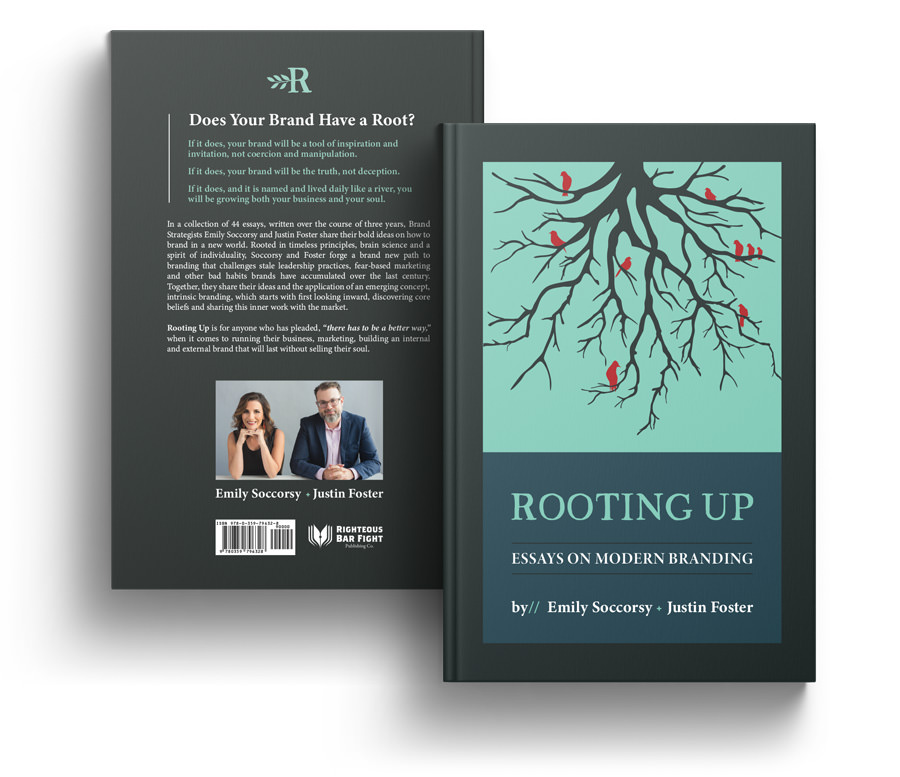Filed Under: 21st Century Branding, Beliefs-Based Branding
Editor’s Note: As we move into the last two seasons of the year, we are answering questions people have repeatedly asked us about branding and marketing.
Like “authenticity,” “story” and the term “branding” itself, the concept of having a “market position” is one that causes business folks to lick their lips and lean in precipitously.
Most brands attempt some variation of a positioning statement, albeit lackluster or inaccurate. The concept of market position was introduced way back in 1981 by Al Ries and Jack Trout in their book “Positioning: The Battle for Your Mind.”
The Ries-Trout positioning formula has held up well, but does requires some updating to modern realities.
What’s most glaringly different in the 21st century is how we go about gaining attention, addressing audience fragmentation and competing in the face of product-saturation. In other words, there’s more noise, more distraction, more competition than ever in today’s market. And none of these conditions will end any time soon.
Yet, everyone wants a strong, well-defined set of position differentiators that make them stand out in the marketplace.
Kind of like abs.
(And given the commoditization of marketing over the last decade, there’s this prevailing mentality that things like market position can be “got.” As if your director of marketing can just purchase a market position like she can buy a new CRM.)
Few players actually know what market position truly is — and how to effectively articulate it.
Modern positioning is clearly establishing the reason why anyone should give you their precious attention and money.
Contemporary positioning is three-part alchemy:
- Understanding and articulating the unspoken need of the audience. Traditional positioning does delve into the needs of the marketplace. In the pre-digital age, this made positioning a direct line of sight between your offering and, then, your audience. But as Steve Jobs once famously said “… people don’t know what they want until you show it to them.” You must dig deeper into the soul of the audience — into the human beings who comprise the audience. You must listen beneath the surface language.
If you’re assigning this piece to an exploration of “the pain,” you are missing opportunities to know so much more about the humans who purchase from you — what they hope for, what they fear, what they desire. (In our Root Sessions with clients, they are frequently delighted to find that their intuition was right along. Their gut knew more about this unspoken need than their mind did.) - Heralding the courage and resources to create a new category if you can’t be #1 or #2 in an existing one. To understand contemporary category design, you must first embrace this: there is no #3 in the market. There are just a whole bunch of brands that are not #1 or #2. Category creation is not for the timid because it requires you to go into uncharted waters outside of the comforting solid ground of ad campaigns, competitive analysis and focus groups. It requires you to push back against your peers who fear change. It requires you to spend resources educating the market on this new category. But the payoff is enormous if you have the fortitude. In short, be the most consistently excellent player in this category, and you will win.
- Offering products that are easy to talk about, easy to buy, and easy to use. No amount of marketing language and ad copy, no tagline, can make up for poor quality, bad customer experience and inconsistent support. This is why the foundation of the brand, which when put into practice results in superior positioning, must be determined as early in the launch process as possible. Old positioning was about top of mind when human experience was far less of a factor. Modern positioning is about becoming the word-of-mouth king or queen.
It’s no longer possible to have a solid market position without a solid brand. So we’d caution you not to fall into the trap of thinking you can buy market position — or a brand.
That idea is a relic of the ad age.
A market position is a result of knowing who you are as a brand and what value you provide to the people who invest in your offerings and then telling that story consistently over time.
**P.S. By rating yourself and your company on how consistently you practice the three aspects mentioned above indicate how well you are currently doing in creating and holding a unique market position.**
Part of our practice is guiding people along the journey to uncover the foundations of their brands so they can enjoy the benefits that come along with that — clarity of message, audience attraction and solid positions. If you’re curious to learn more, we conduct exploration calls weekly. If you’d like to chat, go here.
